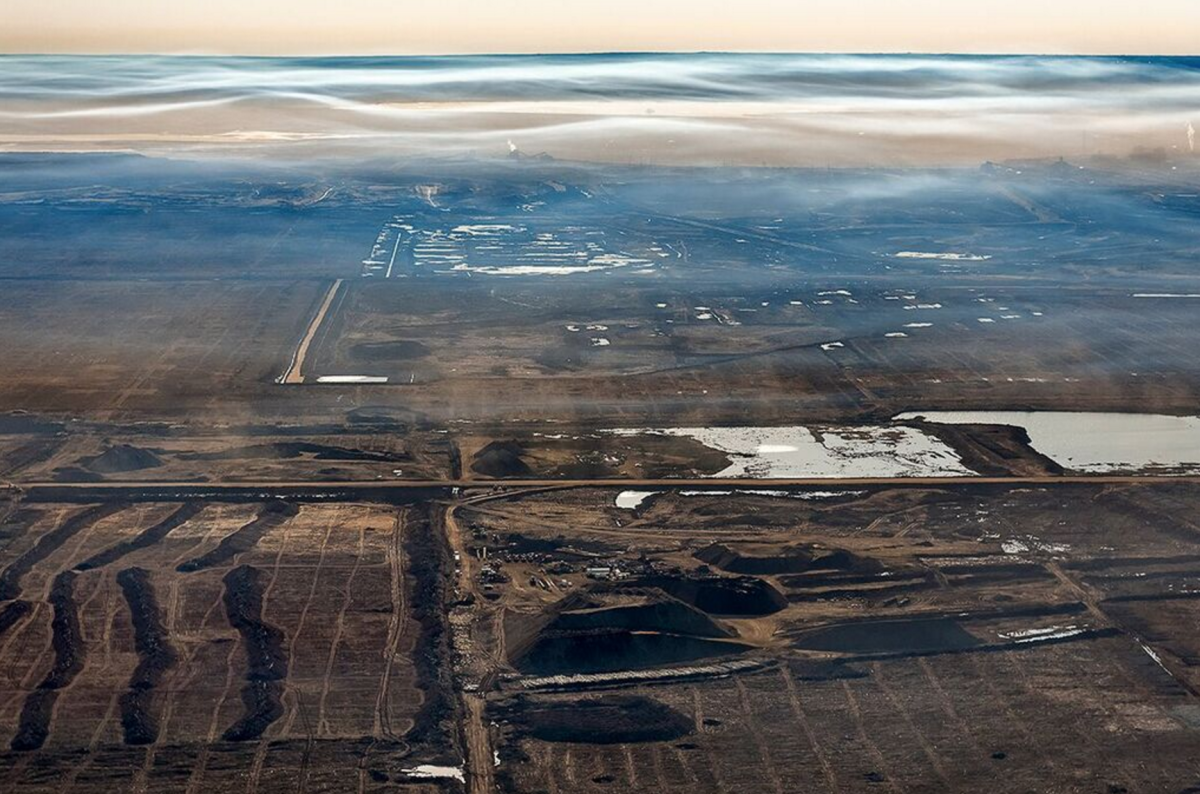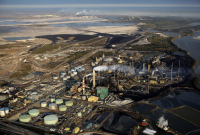Support strong Canadian climate journalism for 2025
The Canadian oilsands industry is beset with environmental concerns and low crude prices. Nonetheless, production is expected to grow. The Canadian Association of Petroleum Producers estimates that oilsands output will reach 3.7 million barrels per day in 2030 from 2.4 million bpd last year.
Some key dates in the history of the oilsands:
1719: A Cree man named Wa−Pa−Su presents an oilsands sample for trade at the Hudson’s Bay Company to Henry Kelsey, who was the first recorded European to see it.
1923: Dr. Karl Clark of the Alberta Research Council develops a process that uses hot water to separate oil from oilsands, which he patents in 1928.
1967: Philadelphia−based Sun Oil opens its $240−million Great Canadian Oil Sands project with an initial production capacity of 45,000 barrels per day.
1974: The Alberta Oilsands Technology and Research Authority is formed to develop a way of recovering the 80 per cent of bitumen buried too deep for mining. The method is known as "in situ," Latin for "in place." The result was steam−assisted gravity drainage, known in industry parlance as SAGD, where steam is injected into a reservoir to warm the thick bitumen so that it can be pumped to the surface.
1978: Syncrude Canada opens a mining operation using large draglines and conveyor belt systems to excavate and pile oilsands deposits.
1993: Suncor Energy adopts more effective and cost−efficient truck and shovel technology to replace less reliable bucket−wheel excavator and conveyor belt systems, resulting in the loss of about 400 jobs.
2001: After several years of operating as a pilot project, Foster Creek becomes the first commercial oilsands project to use SAGD technology. It is now owned by Cenovus Energy.
2004: Alberta oilsands production reaches one million bpd.
2008: Actress Neve Campbell tours the oilsands, becoming one of the first celebrities to speak out against the industry . Since then, a number of high−profile figures including director James Cameron, anti−apartheid leader Desmond Tutu, singer Neil Young and actor Leonardo DiCaprio have made similar trips to draw attention to environmental concerns.
2012: Oilsands production from thermal in situ wells and other non−mining methods reaches 960,000 bpd, surpassing output from strip mines at 930,000 for the first time.
(Sources: Oil Sands Discovery Centre, Suncor Energy, The Canadian Press)





Comments